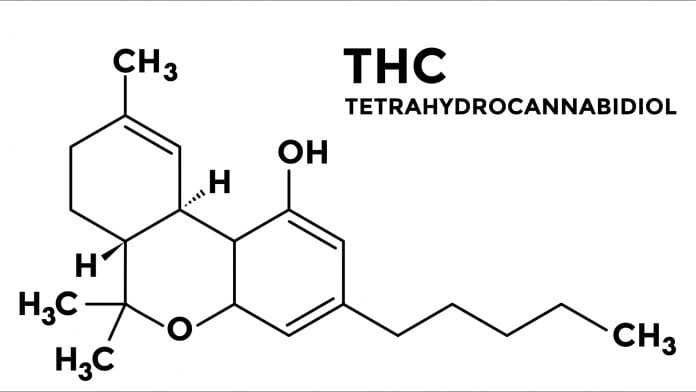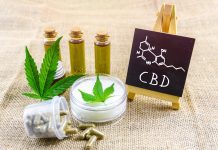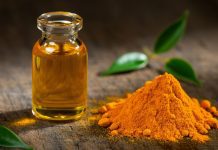
Renowned for his breakthrough discovery of THC, Raphael Mechoulam delves into the world of cutting-edge cannabis research.
Dr Raphael Mechoulam: the chemist responsible for isolating Tetrahydrocannabinol addressed attendees in the keynote speech at the International Cannabis Business Conference in Berlin to explain his cannabis research which unleashed the secrets of the cannabis plant.
Best known for his discovery of tetrahydrocannabinol (THC), one of the 113 known cannabinoids found in the cannabis plant. Mechoulam jumpstarted the medical revolution which has transformed the debate around cannabis and the lives of so many people.
In April 2019, Mechoulam presented the keynote speech at the ICBC International Cannabis Business Conference – with Health Europa in attendance – about his past, present, and future.
The history of cannabis and the three phases of research
Explaining his history in studying cannabis Mechoulam opened the keynote recounting that; “In ancient Syria they used cannabis for essentially all the things that people use cannabis for today. Cannabis was then used over the next couple of thousand years, even Dr Russell Reynolds who was the physician of Queen Victoria in England used to import it from India (European cannabis was not good enough for him) because she suffered from migraines. He didn’t write that in a paper, but it was obvious who it was for because she was the only patient that he had.”
Mechoulam went on to discuss the phases of medicinal cannabis research: “I would like to separate the research into 3 phases. The first phase is phytochemistry. This refers mainly to the chemistry of the plant; most people currently involved in cannabis are involved in phytocannabinoid research on the materials and compounds that the plant produces. These are things which we learned, described and tried to investigate with our research about 30 years ago, but since then many things have been happening. Secondly endocannabinoid research, namely research on the compounds of the cannabinoids that we make. This was completed about 10 years ago, and since then, we have gone into the third phase of cannabinoid research and that is on the compounds that are more or less the same as the compounds we produce, but they have different effects.
“We have a whole system, a lot of compounds that are very much involved in our physiology. At the moment most people are interested in cannabidiol and THC; the chances are as it happened with cannabidiol which had to wait for about 30 years, in 15 years from now most of the talks are going to be about endogenous cannabinoids, and on the cannabinoids which have more or less the same structure, but have different effects.”
Cannabidiol acid
In addition to this, Mechoulam’s keynote speech went onto address the concept of THC and CBD acids. “The two compounds which people have been interested in are of course cannabidiol – we described the structure of cannabidiol way back in 1963 – and we isolated for the first time I believe in its pure form the compound THC and elucidated the structure and later synthesised it. These two are both the centre of interest, but these compounds are not natural products.
“The natural products are their acids. The plant makes THC acid and cannabidiol acid – these are the compounds that the plant makes and although we described and synthesised them years ago, we never tested them for a simple reason; these compounds are not stable. The acids break down very easily and so there hasn’t been a lot of work on them contrary to cannabidiol, if somebody does research on them who knows what they are doing the research on? Is it on the acid or something that the acid has broken down? Very few people were interested in the acids, there are a few papers but not many.
“We thought in the lab that maybe the acids are important by themselves, so we were able to stabilise them with simple a chemical reaction. We could then analyse and identify the activity of these compounds, and so we have been working on cannabidiol acid. It turns out that cannabidiol acid in the studies we have undertaken so far is more potent than cannabidiol itself. The chances are that slowly and to a certain extent, cannabidiol acid will prove to be parallel to cannabidiol oil in its activity because in many aspects, it’s much more active. For example, we have already published that this cannabidiol acid, which is more stable, reduces depression like behaviour in two models of animal depression.
“We cannot experiment with humans because of regulations and even though they are natural products, they must be investigated for toxicity etc. Nevertheless, if we assume that most of the things we see in animals and in animal models are paralleled in human models, then this compound cannabidiolic acid methyl ester will show activity stronger than CBD itself. We have a publication in press which shows that cannabidiolic methyl ester is more potent for treating pain and depression and we have seen a few other examples. These findings will be published over the next few years or maybe even over the next few months. Do not be surprised when cannabidiolic methyl ester starts to replace cannabidiol slowly as the natural cannabidiol of importance, it does not cause the side effects of THC.”
The entourage effect
Famed for his observation of the ‘entourage effect’ Mechoulam explained “Another effect that has gained interest is the entourage effect. We originally discovered this and subsequently it has been confirmed by many people that some of the effects of THC and of cannabinoids – in quite a few cannabinoids – are potentiated by compounds which by themselves had no activity, yet they potentiate the activity of THC.
“Although this is not observed in all effects of THC or all effects of cannabinoids, many of them have this ‘entourage effect’ and so things become very complicated if somebody wants to put THC or CBD as an extract, they also need to know what other compounds are present.
“We will need to develop analytical procedures at least for most of the compounds that are present in cannabis in order to explain the activity, and to not sell compounds with a certain percentage, and another extract with the same percentage even if they are different. We must show ultimately what the rest of the compounds or some of the rest of the other compounds do, and so we must take this entourage effect into account at all times.”
THC
Mechoulam is perhaps best known for work in the isolation, elucidation and synthesis of THC, and continuing the keynote he explained “most of you are aware of the applications of THC with pain, nausea, vomiting, sleep, anxiety, appetite etc. THC has been approved by many bodies in many countries and it’s now an approved drug. This is because many people prefer the extract, possibly because of the entourage effect- rather than THC itself.”
Furthermore, Mechoulam went onto suggest that the “one thing that people have not investigated very thoroughly is the role medical cannabis plays in depression. THC demonstrates a significant anti-depressant effect however, there are other compounds such as cannabichromene for example, that can show the same effect – at a slightly higher dose, but still the same effect.
“Therefore, we need to know what is being sold exactly, whether it is THC, cannabichromene or whether it is other things. Cannabichromene may not be as active as THC, but it doesn’t cause the same side effects so perhaps people will be selling cannabichromene because of the lack of side effects which people in pain don’t want.
“We have published that THC is also important in post-trauma. In order to lower the effects of post-trauma, we went ahead and did a clinical trial and found that low amounts of THC which do not cause a high, may help these patients. We had a group of 12 patients; a few soldiers, a few from car accidents etc. and we found that in essentially all the effects of post trauma, THC helped. The effects didn’t disappear, but they became easier to live with.
“The best effect was with sleep. PTSD patients do not sleep well – they are afraid to go to sleep because in the middle of the night, they wake up with the trauma happening again. We found that with THC in low doses, they sleep much better and this is one of the reasons post-trauma patients do take cannabis.”
Why did we wait 30 years? Cannabis and epilepsy
Moving forward, Mechoulam went on to discuss cannabidiol in epilepsy and the delay in his ground-breaking research being acted upon. “I will start with epilepsy because it has been proven. In a paper we published in 1980, in collaboration with colleagues and friends in South America, we found in animals, as was previously noted in the literature for 2000 years that cannabis works in epilepsy.
“Therefore, we looked at cannabidiol in humans and saw that in most of the patients, it effected the epilepsy positively– after treatment most of them had very few attacks, a few of them had a lot less, and only one was not affected [positively] by the cannabinol at all. We published the findings and we thought that maybe it would spur on larger trials and eventually it will be introduced as a drug. However, nothing happened for over 30 years until some parents in the US discovered that plants containing large amounts of cannabidiol helped with their children’s epilepsy. These children sometimes have terrible epilepsy having over 20 attacks a day.
“So why did we have to wait for 30 years? Thousands of children and patients could have been helped, but because of possible legal problems and other perceived problems, nobody had taken up the information that was in the literature. Once parents saw that cannabidiol could help, there was pressure on the US authorities and a large trial was approved because of social pressure. It turned out to be extremely positive and paralleled our findings, and now cannabidiol under the name Epidiolex is an approved drug for epilepsy.
“Why wasn’t that done 30 years ago? We had found that cannabidiol is active in autoimmune diseases which are diseases in which the body for many reasons some of which we don’t know, attacks itself. There are many autoimmune diseases, and one condition which is particularly close to autoimmune disease is graft versus host disease (GvHD).
“Sometimes in cancer patients the bone marrow has to be replaced but when this is done the body may attack it. The bone marrow itself may attack the body and the patient suffers, sometimes very much. This is essentially an autoimmune reaction, so a colleague of mine Dr Yeshurun started to give pure cannabidiol to patients with GvHD and he was very pleased to note that in most of the patients who had relatively mild disease (grades 2-4) 40% previously had GvHD, but when they were taking cannabidiol this went down to 12%. Those with severe GvFD which was previously 10% and a few even died, went down to about 5%.
“Here we have a drug (cannabidiol) which can be used in this anti-cancer treatment. It is being developed as a drug, a company is going ahead with the CBD in GvHD and I think it is now in phase two and the chances are that it will be in phase 3 shortly. Let us hope that in a year or two we shall have a drug (CBD) as a potent GvHD drug, for which there are no other drugs currently.”
Treating schizophrenia
Continuing Mechoulam elaborated on research into treating schizophrenia: “we have previously shown with good friends and colleagues in South America that medical cannabis helps a few schizophrenia patients and we published many years ago that we had given CBD to a young woman who had terrible schizophrenia and it helped her over the course of 3 months. In Germany there has been a relatively large or certainly larger trial with schizophrenic patients whom nothing had helped or had helped them for long and they found that CBD was an excellent alternative when comparing it to one of the drugs already used (Amisulpride) which although is very effective, does cause side effects. Cannabidiol and the drugs already being used, had the same activity except that cannabidiol caused no side effects.
“Many schizophrenic patients don’t want to take their medication because of the side effects. The chances are that cannabidiol may be able to replace these drugs but unfortunately the amount of cannabidiol required is very high at about 800mg per day. Just maybe with the new drug developments such as methyl ester, we could get this down to much lower does. The chances are that cannabidiol will be approved as a drug for schizophrenia – I’m not sure that it is approved in any country at the moment but in Israel it is being discussed in a meeting with the heads of the Ministry of Health and I will be arguing the case for using cannabidiol as a schizophrenic drug.”
Cannabidiol as a derivative drug?
Mechoulam expanded on the practical logistics of improving a naturally occurring substance adding that “almost all drugs of natural products are sold not as the drugs themselves, but as a derivative. There are quite a few reasons for this. Firstly, with any natural product the patent is not very strong, but by making a small derivative (a chemical derivative), one can get more potent compounds. These types of compounds are better in a variety of ways.
For example, today you can buy a derivative of Penicillin or cortisone for example – you cannot buy cortisone in a pharmacy, but you can buy derivatives of cortisone and these derivatives can generate 5 or 6 billion dollars [per year]. The chances are that cannabidiol will also be available on the market as a derivative.”
Reflecting on cannabis research
To close, Mechoulam addressed cannabis research: “it is obvious that cannabidiol acts on something in the body specifically, which may be a receptor. Therefore, a US group found a receptor protein in the body, and CBD binds to it and starts all the reactions. We don’t have receptors because there is a plant out there – we have receptors because we naturally produce compounds that will stimulate these receptors.
“We went ahead looking for compounds, and this receptor was found in all these places such as the basal ganglia that have to do with movement control, co-ordination and cognitive function – all of these things that people know are affected by THC. This receptor was obviously important, and central. As a result, we started looking for the compounds that we (or animals) make that activate and parallel the activities of THC.
“After a lot of work, we found two compounds which we called anandamide and 2AG. They are chemically completely different but cause the same activity as THC. These two compounds anandamide and 2AG which animals and humans produce, are completely chemically different from THC, but they have the same physical properties. They are lipid, they dissolve only in lipids and not in water. They bind to the same receptor and so on.
“Anandamide and 2AG have been discussed widely in literature, there are thousands of publications on anandamide and 2AG and these compounds are central in the so called endocannabinoid system which consists of the receptors, the two compounds, the enzymes that break down these compounds and help to synthesise them, and of course THC and cannabidiol. There has been a lot of theoretical work, or work that has very little relation to marketing for a simple reason.
“Although we discovered anandamide and a little later 2AG, anandamide has never been administered to a human, again because of mostly legal reasons. It is not toxic; it is made by the body – if we compare that with insulin? Insulin was discovered 100 years ago in Canada and within 6 months to a year it became a drug – a very useful drug which people still use today. Why then has anandamide which has many medical properties, never been used? Legal reasons, patent problems etc. This is strange because we know in schizophrenia for example that when cannabidiol is administered, that the anandamide concentrations go up. If those levels go up, maybe it is anandamide that is helping and not the cannabidiol, but the anandamide indirectly. There are many other diseases that anandamide is involved in, so it is unbelievable that it has never been given to a human.
“For example, neuroprotection. We tried with colleagues of ours to see whether these compounds are involved in neuroprotection and we tested this in mice. We saw that when we induced a small attack of the brain – within a couple of weeks they went back to being completely normal. We saw that 2AG one of the 2 endocannabinoids increased tremendously. Is that because the brain was damaged and didn’t know what it was doing, or was it some kind of protection? We synthesised a lot of 2AG and gave this to animals and when compared to animals who were not given 2AG we saw that 2AG is a potent protectant. We also saw that in the control group we had a certain amount of damage yet those that were given 2AG had 50% less.
“One thing that has been found quite recently in South America, is that CB1 receptors are not only known to lower anxiety, but quite a few of the drugs we use today and we are not sure of their activity, or we have wrongly assigned some of their activity, is due to the cannabinoid system. For example, Xanax (Alprazolam) which is a well known and widely used anti-anxiety drug – actually works through the cannabinoid receptors.
Phase 3
“At present we are working on phase 3. Phase 3 research is something else entirely. I mentioned anandamide, which is a very simple compound, it is a fatty acid bound to an amino acid. We have about 20 fatty acids and about 20 amino acids in our body. Our bodies aren’t lazy, if it knows how to make anandamide by taking a fatty acid and binding it to an amino acid, then why not take the other fatty acids and the other amino acids to make additional compounds and make use of them so it doesn’t have to use energy? It already has the machinery to do so, and we found that this is exactly what is happening.
“We saw it in brain injuries for one example, a brain injury causes effects on all kinds of transmitters and blood vessels and causes neuronal and cell death. Brain injury can also cause vasoconstriction, constriction of the blood vessels which is not healthy, so the body tries to prevent it. There is a compound in our body which helps with vasoconstriction and so we went looking for that. We didn’t know that it had anything to do with endocannabinoids and we just went looking for the compound– it could be anything.
“After quite a lot of work we found that our body helps with vasodilation by making a third compound similar to anandamide which doesn’t cause any of the effects of anandamide, it just helps with the vasoconstriction and dilates the blood vessels. This is something our body makes in order to prevent vasoconstriction which is due to brain damage. If we block this system the brain damage is much more severe, so here we have a cannabinoid like drug which has to do with vasoconstriction, vasodilation, and again maybe it will be used as a drug in future.
Conclusions
“In summary, there are 3 phases of cannabinoid research. One of them has to do with the plants, THC, CBD and possibly other compounds. The second has to do with endocannabinoids which are involved in a large number of physiological processes, and within that there are CB2 receptors which are specific for many diseases and do not cause side effects. The third one is a huge number, almost a hundred compounds which our bodies make, and we know about the activity of only 5 or 10 of these currently,” he concluded.
Please note, this article will appear in issue 10 of Health Europa Quarterly, which is available to read now.








I have Genital Herpes for 2 years now and I succeeded in getting rid of it with Herbal medicine, it is natural and fast in curing diseases. To me it is reliable safe and really active. There is no diseases that Herbs don’t have cure to. I was cured from Genital Herpes with Herbal medicine through Dr Ahmed Herbal medicine. I came across his good work testimony on You-tube I copied his email address and emailed him I first taught it was a scam not until he sent his Herbal medicine to my country Email drahmedusman5104 @ gmail. com
I am 73 years old, and I have had a cyst on the inside of my right leg, just above the knee for over 50 years. When I was pregnant over 48 years ago, my doctor noticed it and told me not to have it removed, because if I ever got cancer, it would be the first place that the cancer would show up. I started taking CBD oil as soon as it was legal in Canada, about one year ago, and I recently discovered that my 50-year old cyst was disappearing. From a hard lump about the size of my finger tip, it has shrunk down to a very tiny pimple. The only change I have made is the addition of the CBD oil; 5 drops twice daily. I agree that we should start moving away from manufactured drugs to natural source and food-as-medicine. Carry on with cannabis…it is a wonder plant, cultivated and used medicinally for thousands of years.
It is too bad that so much research is wasted developing marketable isolates, when the natural plant material is best and cheapest, besides safest.
Thank you for that one. I’d love to read more about people and scientists involved in the discovery of the full potential of endocannabinoid system and its role in human mind and body.
What do you think about synthetic cbd and the current novel food situation?
Time for the FDA to draw some conclusions. CBD acceptance is taking too long.